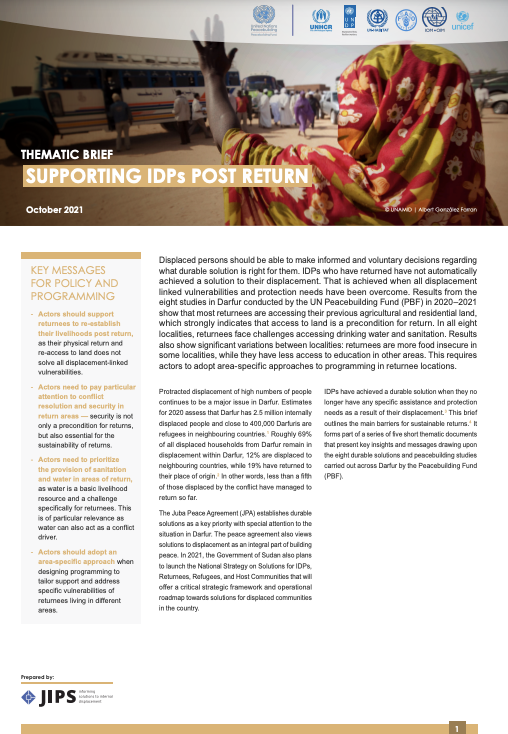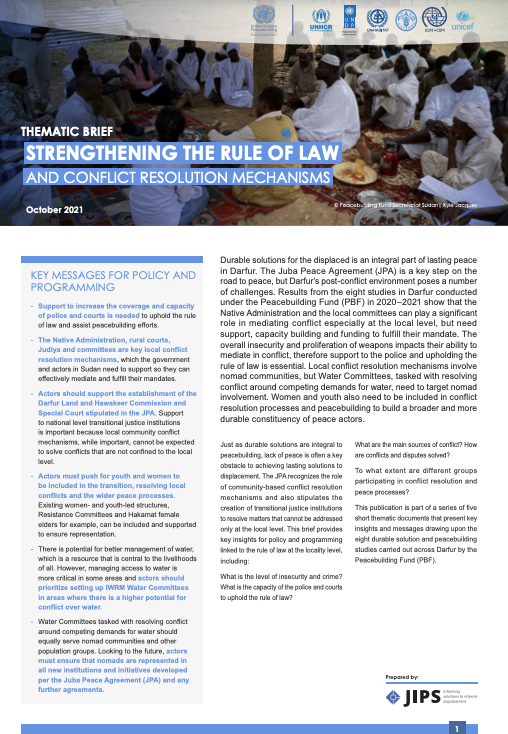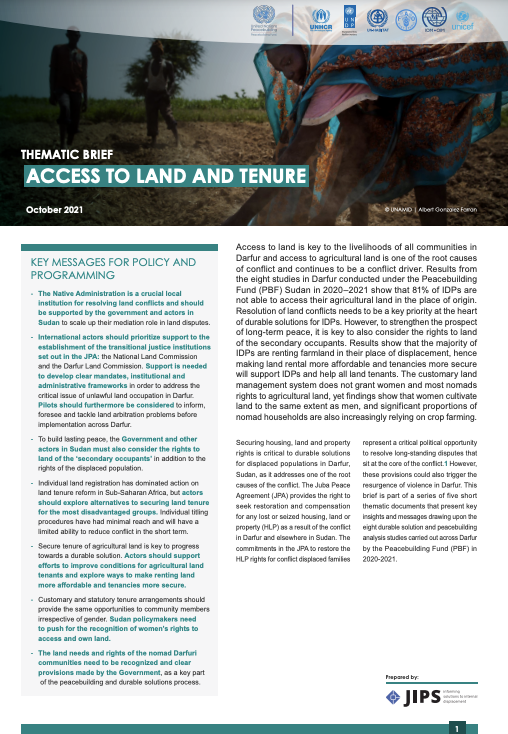The Juba Peace Agreement (JPA) was signed in 2020 to structure the pathway to peace for the many people affected by nearly two decades of conflict in Darfur. It establishes durable solutions for displaced populations as a necessity for lasting peace in Sudan. This is reiterated by the National Strategy on Solutions for IDPs, Returnees, Refugees, and Host Communities that the Government is planning to launch in 2021.
In 2020, a large-scale analysis covering eight localities across Darfur’s five states was initiated to provide a shared evidence-base to support peacebuilding and durable solutions under the UN Peacebuilding Fund. The key insights from the resulting locality studies have been condensed into five thematic briefs, which are summarized below and help inform policy and programming led by the Government of Sudan and the humanitarian, development and peacebuilding actors in-country.
Specifically, the results show that the majority of IDPs prefer to locally integrate, while only a third wants to return to their location of origin. They bring focus to key obstacles that hinder local integration and the preconditions for sustainable returns. The findings also call for a stronger focus on nomads, who can play a key role in peacebuilding efforts, and bring critical attention to the need for better inclusion and participation of communities and especially women and youth, which is critical to peacebuilding and solutions to displacement.








